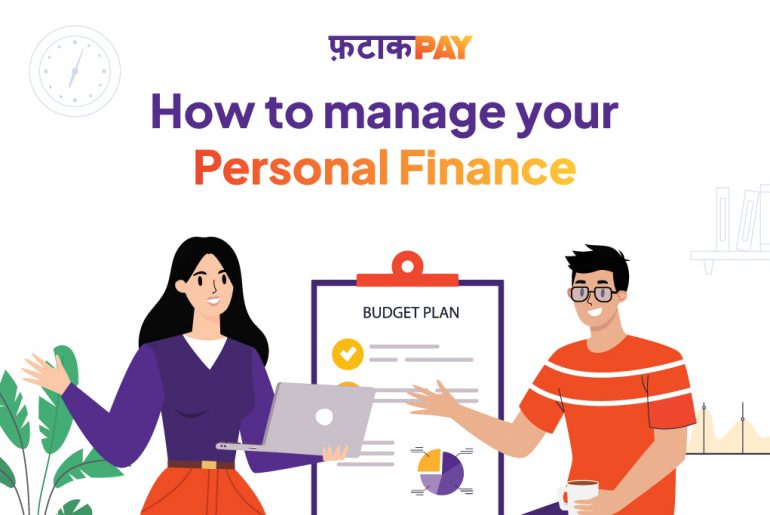Do you know where your money is? Are you able to regularly track your expenses? If not, then understanding your Personal Finance will help you manage your funds in a better way.
Most people will measure their personal cash flow on a monthly basis. They’ll look at how much they’ve made and how much they’ve spent. While this is a great way to manage your finances, some people may forget to budget yearly expenses, such as investments in mutual funds or sudden medical expenses. When those costs eventually come up, they may not have the funds available, making their cash flow negative. Getting your personal cash flow under control is a skill you’ll want to master.
How to determine your cash flow?
Anyone can determine their cash flow by creating a budget. All you need to do is write down your monthly income, including passive income sources, and then subtract all your expenses. Instead of focusing on a single month, you may want to track your expenses for 12 months. You’ll have a much more accurate picture of where your money is going and how it contributes to your net worth.
Why should you care about your Personal Finance?
While being cash flow positive (where your expenses don’t exceed your income) is great, you’re basically living paycheque to paycheque if you don’t have any savings built into your budget. The idea of having an emergency fund is vital, as it’ll give you a cash injection if something major comes up, such as an unexpected repair or medical expense.
Cash flow is also vital when thinking about the future. If you’re able to save money every month, you can make smarter money decisions in the future. For example, you could purchase things without going into debt, or try out investing avenues such as the stock market.
If you think about the bigger picture, being cash flow positive is something you’ll want to be if you plan on buying a home in the near future, or achieving financial independence.
On the flip side, let’s say your cash flow is negative. In case you have taken a instant personal loan, you may fall into a debt spiral in these situations, which could ruin your finances or potentially tank your CIBIL score.
It is important to address cash flow problems before they get out of hand.
Here are some steps you can follow to manage your cash flow:
Create a budget:
A budget is a financial plan that outlines your expected income and expenses for a specific period. By creating a budget, you can better understand where your money is going and identify areas where you can cut back on spending.
Prioritise and track your expenses:
All expenses are not the same. Some expenses, such as rent or EMI payments, are more important than others. By prioritising your expenses, you can ensure that you have enough money to cover the most important ones and have a better chance of maintaining a positive cash flow. In order to effectively manage your cash flow, you need to know where your money is going. This means tracking your expenses, including both fixed and variable costs. You can use a budgeting app or spreadsheet to track your expenses and see where you are spending the most money.
Find ways to increase your income:
If you are struggling to maintain a positive cash flow, one option is to look for ways to increase your income. This could include taking on additional work or using passive ways to increase your income, such as investing in the stock market.
Use the 50-30-20 rule:
The 50-30-20 rule is a budgeting trick. The idea is simple. You put 50% of your income towards necessities, such as rent/EMI, groceries, transportation and internet/cell phone. Another 30% goes to your wants, which may include entertainment, clothes, eating out, etc. Finally, the remaining 20% is for savings.
If you’re able to stick to this plan, you’ll likely have no problem reaching your financial goals. That said, if you live in an area with a high cost of living, you may have to dedicate more of your budget to housing.
Automate your savings and monthly payments:
Automating your savings and bill payments can make your financial system much more reliable. Automation of savings and payments can ensure that you are paying your bills and dues on time without having to keep a track of them manually. You can also set up automatic withdrawals that will go right into your savings account in order to automate your savings. The risk of not automating is that you may have to pay extra charges, if you don’t do your payments on time.
This article is part of the basics of the Personal Finance series. We hope you are able to apply the concepts mentioned above and eventually achieve the financial stability that you deserve.








4 Comments
My family always say that I am wasting my time here at web, however I know I am getting familiarity every day by reading
thes fastidious posts.
An impressive share! I have just forwarded this onto a co-worker who had been conducting a little research on this.
And he actually ordered me breakfast simply because I discovered it for him…
lol. So allow me to reword this…. Thank YOU
for the meal!! But yeah, thanx for spending time to discuss this topic here on your blog.
Hi there! I realize this is somewhat off-topic however I had to ask.
Does running a well-established blog such as yours take a lot of
work? I’m brand new to blogging however I do write in my journal daily.
I’d like to start a blog so I can share my personal experience
and feelings online. Please let me know if
you have any suggestions or tips for brand new aspiring bloggers.
Thankyou!
Wonderful, what a weblog it is! This website provides
valuable information to us, keep it up.